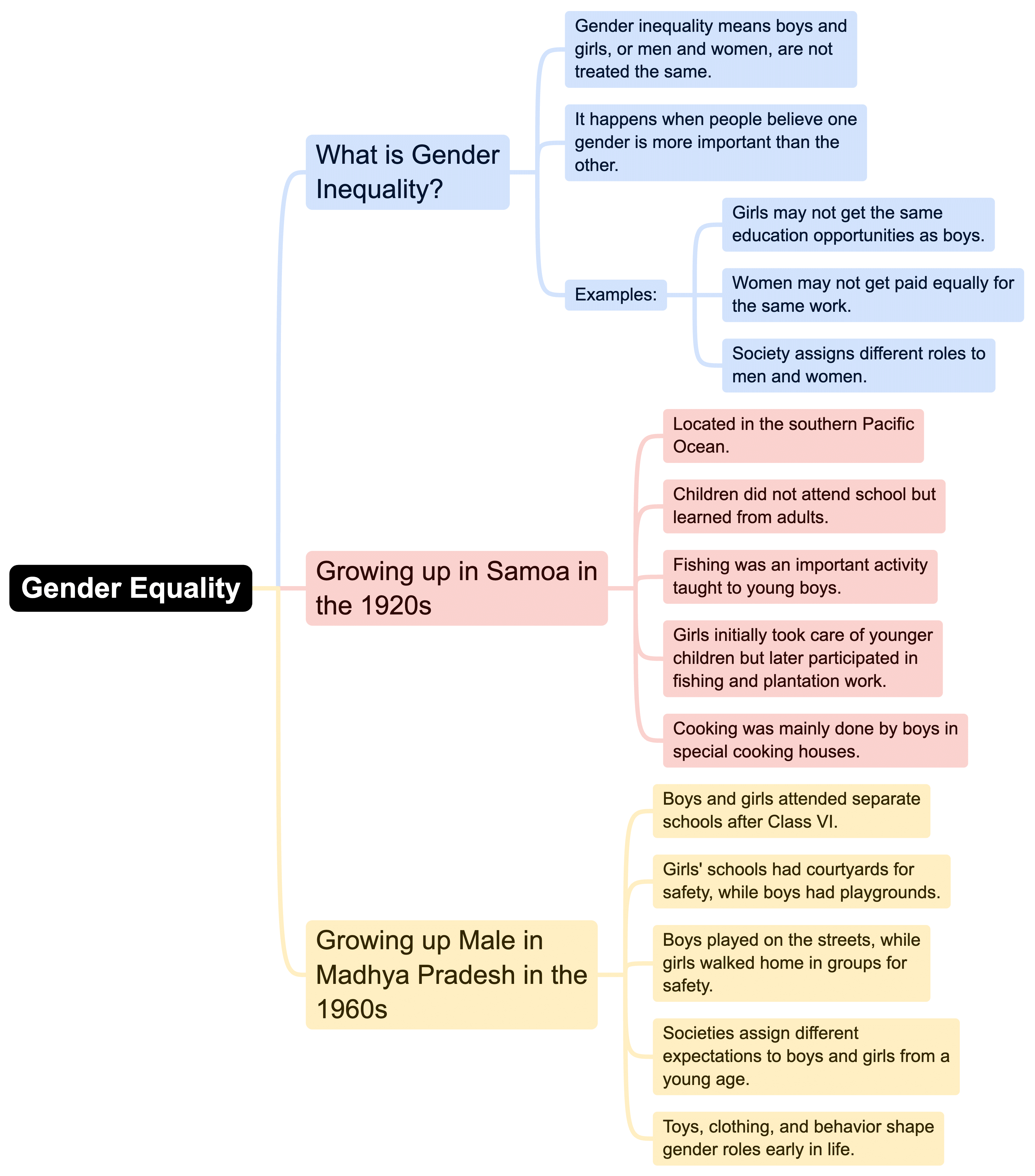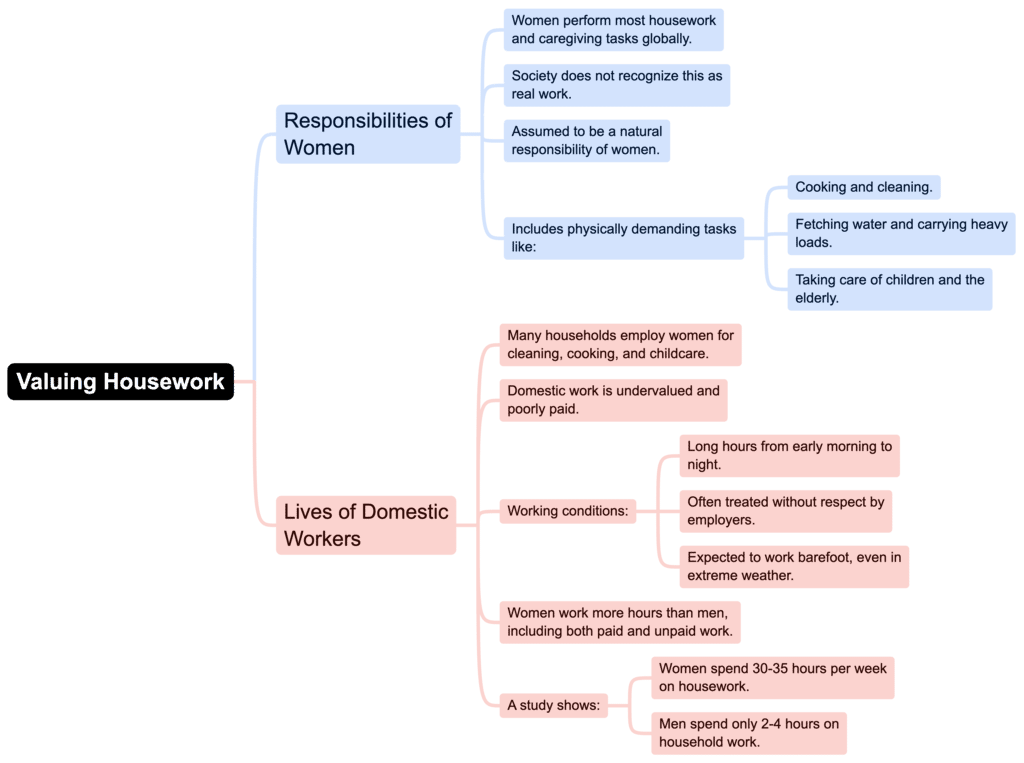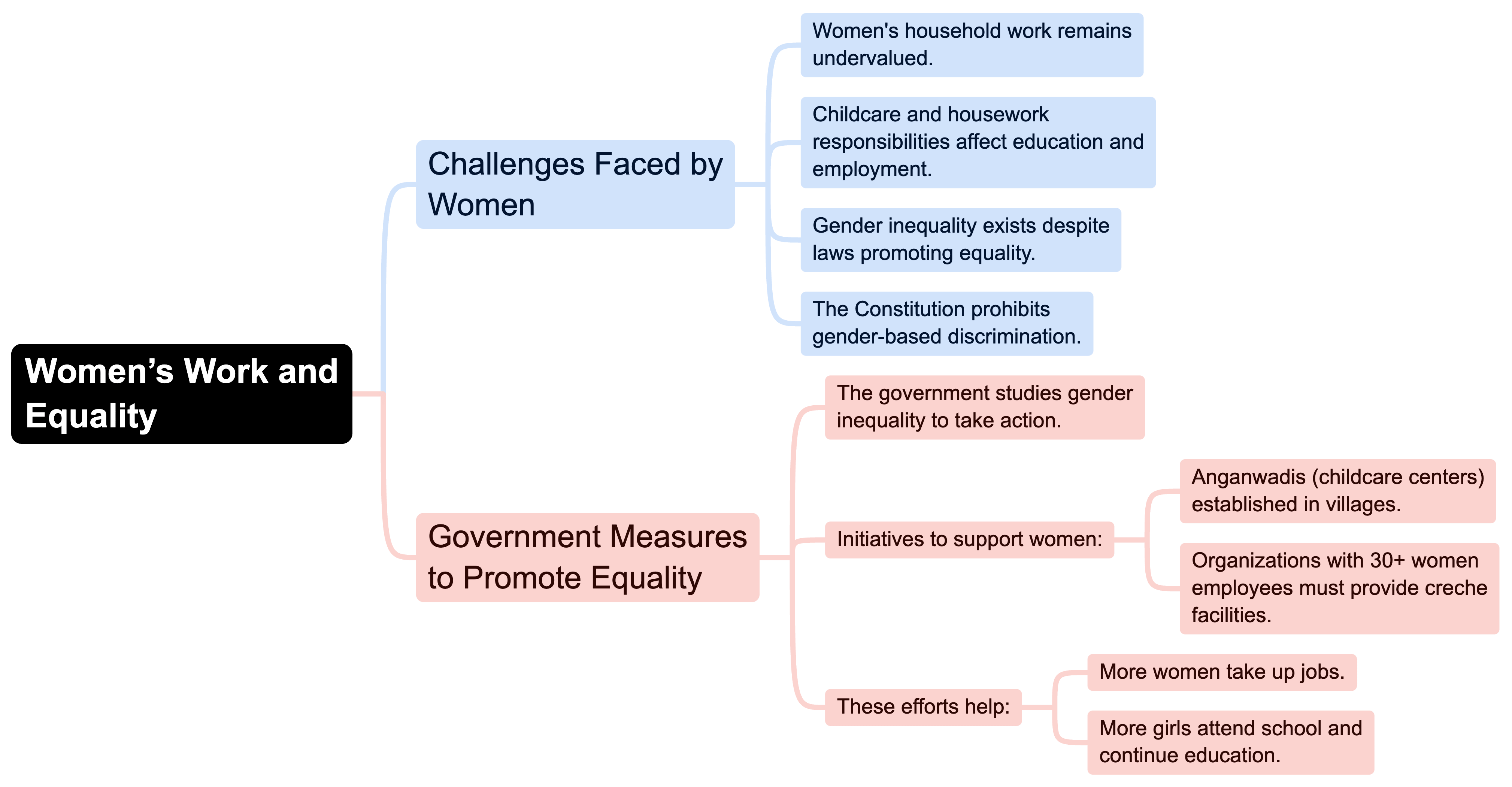Class 7 Exam > Class 7 Notes > Social Studies (SST) Class 7 (Old NCERT) > Mind Map: Growing up as Boys and Girls
Mind Map: Growing up as Boys and Girls | Social Studies (SST) Class 7 (Old NCERT) PDF Download



The document Mind Map: Growing up as Boys and Girls | Social Studies (SST) Class 7 (Old NCERT) is a part of the Class 7 Course Social Studies (SST) Class 7 (Old NCERT).
All you need of Class 7 at this link: Class 7
|
63 videos|552 docs|46 tests
|
FAQs on Mind Map: Growing up as Boys and Girls - Social Studies (SST) Class 7 (Old NCERT)
| 1. What are the main differences in the way boys and girls are raised in society? |  |
Ans. Boys and girls are often raised with different expectations and social norms. Boys may be encouraged to be more assertive and independent, while girls might be taught to be nurturing and cooperative. These differences can impact their self-esteem, communication styles, and future relationships.
| 2. How do societal expectations affect the behavior of boys and girls during adolescence? |  |
Ans. Societal expectations can significantly influence the behavior of boys and girls during adolescence. Boys may feel pressured to conform to traditional notions of masculinity, leading them to be more competitive and less expressive of their emotions. Conversely, girls may be encouraged to focus on social relationships and appearance, which can affect their confidence and academic performance.
| 3. What role does education play in shaping the identities of boys and girls? |  |
Ans. Education plays a crucial role in shaping the identities of boys and girls. It provides them with opportunities to develop their interests and skills. However, biases in educational materials or teacher expectations can reinforce gender stereotypes, affecting how students perceive their capabilities and future aspirations.
| 4. How can parents help their children navigate gender stereotypes? |  |
Ans. Parents can help their children navigate gender stereotypes by promoting open communication and encouraging them to explore interests regardless of gender norms. They should also model inclusive behavior and challenge stereotypes when they arise, creating an environment where both boys and girls feel valued and supported.
| 5. What impact do peer relationships have on the development of boys and girls? |  |
Ans. Peer relationships are vital for the social development of boys and girls. Positive friendships can boost self-esteem and provide emotional support, while negative interactions may lead to bullying or social anxiety. The dynamics of these relationships can differ, with boys often engaging in more physical play and girls forming closer emotional ties, influencing their social skills and conflict resolution strategies.
Related Searches
















